- BIG IDEAS -
What is Water?
Water is the liquid that makes life on Earth possible. As water cycles from the air to the land to the sea and back again, water shapes our planet — and nearly every aspect of our lives.
All Living Things Need Water
All living things, from tiny cyanobacteria to giant blue whales , need water to survive. Without water, life as we know it would not exist. And life exists wherever there is water.
All organisms, like animals and plants, use water: salty or fresh, hot or cold, plenty of water or almost no water at all. They are adapted to all kinds of habitats , from sizzling deserts to the freezing, pitch-dark ocean floor. The first living things appeared in the ocean nearly four billion years ago. Some, like our ancestors, adapted to life on land. Humans have figured out how to survive in swamps, deserts, and all kinds of habitats in between.
The ocean is still home to more kinds of life than anywhere else on the planet.
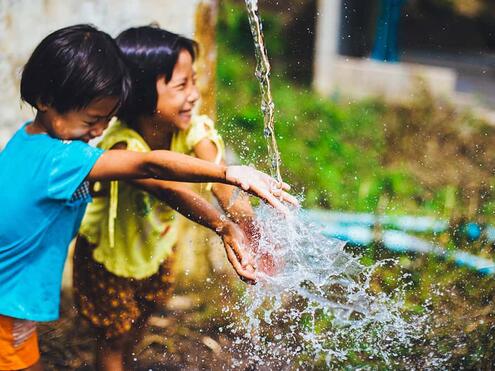
Did you know that around two thirds of your body is water?
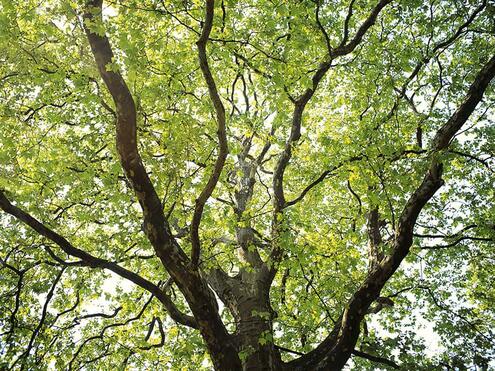
Plants draw water and nutrients up out of the soil through their roots.
All Ecosystems Need Water
How much water is there on an island or a mountaintop? The answer determines what lives there, and how many of them.
An ecosystem is a community of living things, or species. Some ecosystems are very wet and others very dry, some with fresh water and others with salty water. Some ecosystems, like coral reefs, support lots of species, and others, like the dry Antarctic valleys, support very few.
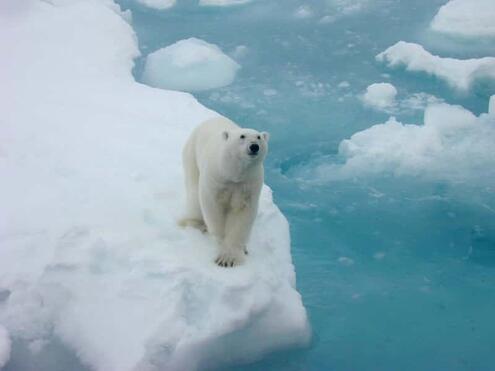
Many animals, like polar bears, caribous, whales, and people, live in the icy Arctic.
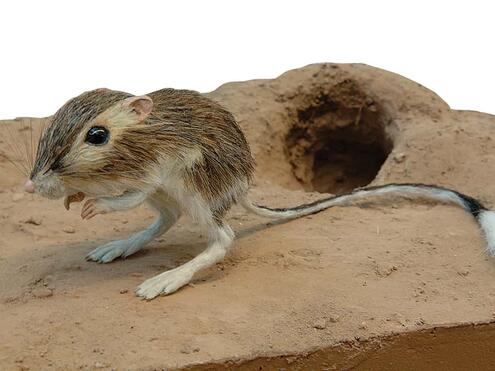
In the dry desert, kangaroo rats get all the water they need from the food they eat.
The Amazing Water Molecule
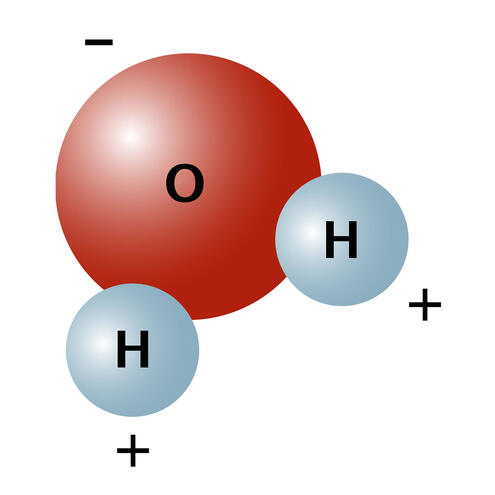
Two hydrogen atoms and one oxygen atom form the water molecule. A hydrogen bond between water molecules forms side with oxygen has a negative charge; the hydrogen side, a positive one.
Water may not seem special. It's clear. It has no taste. It doesn't smell like anything. But if it couldn't do the things it does, life on Earth would not exist.
Water is a tiny molecule. It consists of three atoms : two of hydrogen and one of oxygen. Water molecules cling to each other because of a force called hydrogen bonding. It's the reason why water can do amazing things.
Water is a shape-shifter. It exists in three states on Earth: liquid, gas, and solid:
- Liquid water is a jumbled bunch of water molecules. It comes out of our faucets, flows underground and in rivers and oceans, and forms clouds and fog in the air.
- When water molecules escape from liquid water and float into the air, they turn into an invisible gas called water vapor. The spaces between the molecules are much bigger than the molecules themselves.
- When water freezes into a solid, it does a strange thing: it floats! (Most other solids become denser and sink.) As ice forms, water molecules arrange themselves neatly in a crystal structure. The empty spaces between the molecules act as flotation devices — the way a life preserver holds you up.
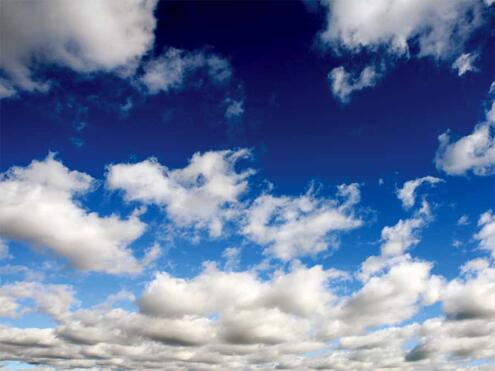
Clouds, fog, and mist are a cluster of tiny liquid water droplets called drizzle drops.
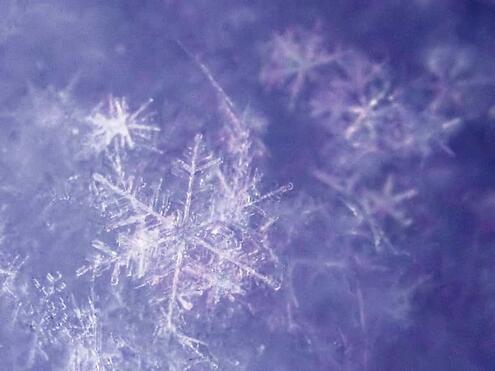
Snowflakes are ice crystals. Temperature and humidity determine their shapes.
All Water on Earth is Linked in a Vast Cycle
Earth's water is always in motion. It moves inside the planet, across its surface, and in the atmosphere above.
Water in lakes, rivers, and oceans turns into vapor and moves into the air through evaporation. Plants draw water from the soil and return it to the air. Volcanoes release water vapor that was locked deep inside rocks. All that water rises and falls back to Earth as rain or snow. This water cycle repeats over and over.
Can you imagine how far the water in your shower has traveled? (Remember, it's been on Earth for over 4 billion years!) Where do you think it will go next?
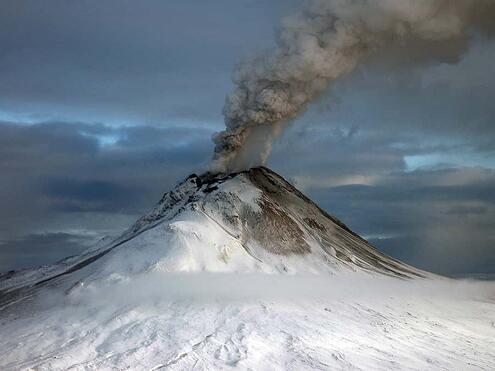
As hot magma rises through Earth's crust, water vapor is released into the atmosphere.
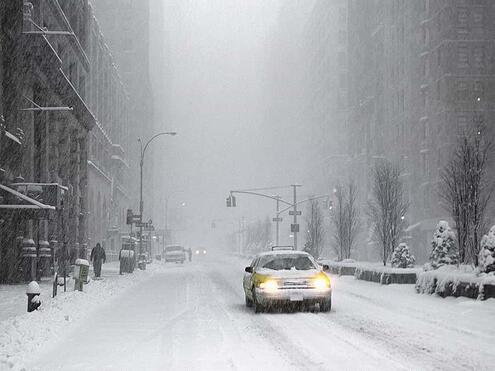
Water vapor in the air condenses into droplets that fall back to Earth as rain or snow.
Water and Climate Are Connected in Many Ways
Liquid water can absorb and store huge amounts of heat without melting, freezing, or boiling. That's why water affects or controls climate in many ways. (Climate is the average weather in a place, over a long time.)
Ocean currents move warm water around the globe. At the North and South poles, sea ice forms and melts with the seasons. Water vapor in the atmosphere holds in the Sun's heat like a blanket. Clouds and ice sheets reflect some of that heat back into space. Together, these processes keep our planet from getting too hot or too cold.
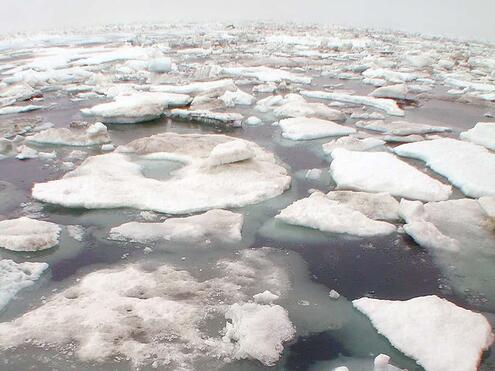
As sea ice forms and melts with the seasons, it helps regulate Earth's climate.
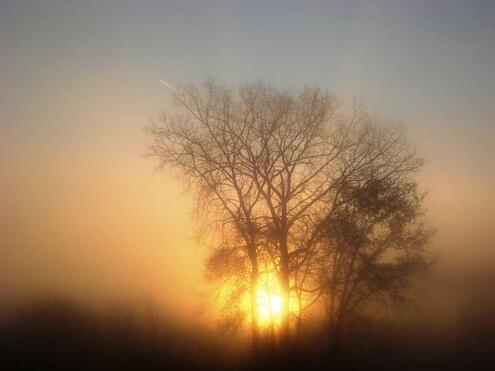
Water vapor traps some of the Sun's heat so it doesn't all bounce back into space.
Water Shapes Our Planet
Water runs easily through your fingers. It may not feel powerful. But lots of water, acting over time, shapes the world around us.
Falling and running water erodes rocks, creating giant canyons. Rivers and streams move dirt that forms new land. Glaciers scrape across the ground, carving valleys and dragging debris. Tides and storms claw away at coastlines. And water locked in Earth's crust actually has a role in moving the giant continents below our feet.
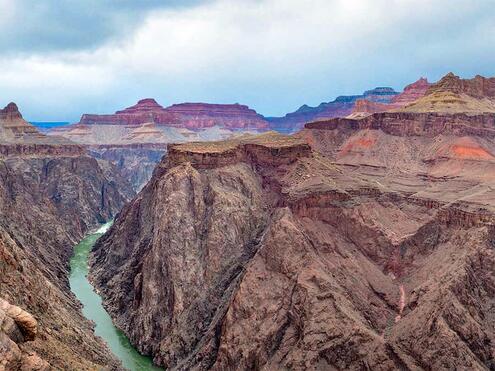
Over millions of years, the Grand Canyon was sculpted by the moving Colorado River.
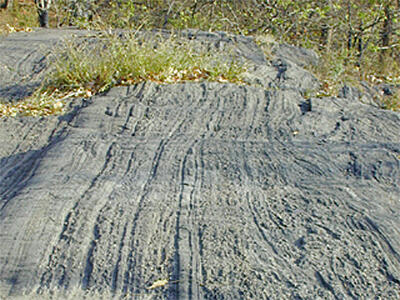
Long ago, massive moving glaciers scraped deep grooves into rocks in Central Park in New York City.
Too Much Water, and Not Enough
The water on Earth today is all the water we will ever have.
The ocean holds most of it — over 97% of Earth's water is salty. Less than 3% is fresh — this is the water we drink, water plants with, and use to make things. Most of the fresh water is locked up in glaciers and ice caps. Only a tiny bit of what's left over is available for humans.
Some places are too wet and others too dry. In fact, half of the world's fresh water can be found in only six countries! More than a billion people live without safe, clean water, and the number of thirsty people is growing.
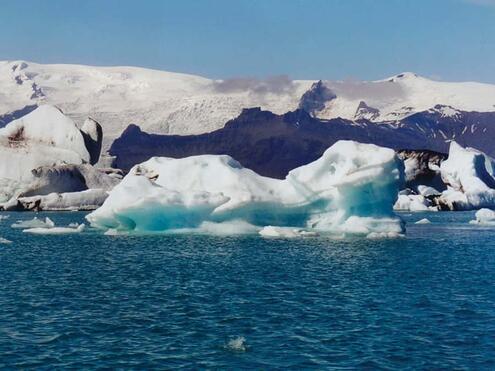
About two thirds of the world's fresh water is locked in glaciers and ice caps.
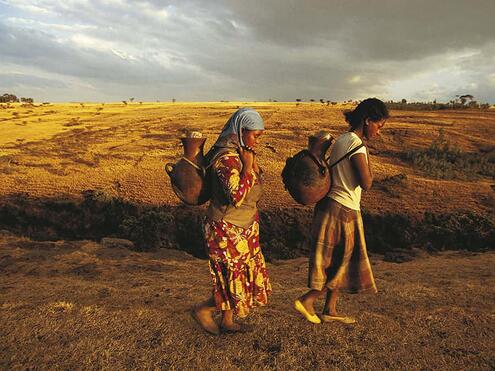
In some areas where water is scarce, people carry water home from faraway places.
Humans Put Water to Work
You've probably had a drink of water or washed your hands today. But people use water for so many other purposes, like cleaning stuff, transportation, and generating hydroelectric power. Just as nothing can live without water, not much can be made without it, from cotton candy to cotton T-shirts.
Because water is so useful, most people live along coastlines, rivers, and lakes. Where fresh water is limited, people have used many technologies — like wells, dams, and canals — to store and move it.
Sometimes these technologies damage habitats. Other species have to compete with humans for water. This may help explain why so many creatures that live in fresh water are endangered.
We need to be smarter and more careful about how we use water in order to make sure that there's enough for all life on Earth.
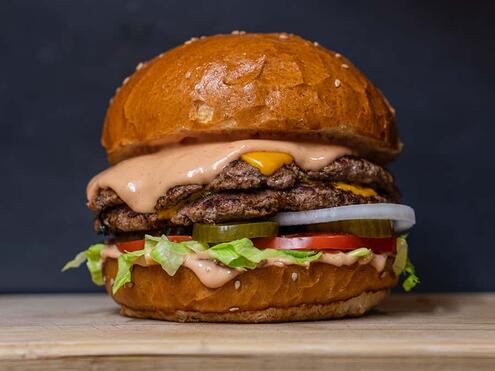
It takes 2,400 liters (634 gallons) of water to produce one hamburger!
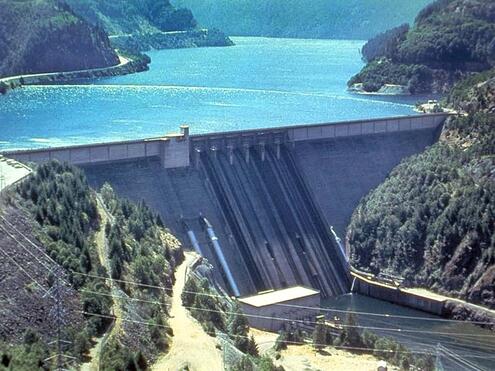
Dams can supply water and generate power. But they also damage habitats.
We Need to Take Care of the Water Planet
Water is precious. We can't get more. How do we make sure there is enough clean, fresh water to share with all living things?
Remember that every drop we use — or waste — continues through the water cycle. Stuff we put down the drain ends up in someone — or something — else's water. Chemicals like fertilizers and pesticides pollute lakes and oceans, harming the organisms that live in them.
We need to protect swamps and riverbanks. These wetlands clean water naturally, and provide important habitat for many wild birds, fish, and other species. People are working to restore damaged or lost wetlands.
We can use water more wisely. For example, it takes a lot of energy to produce bottled water, and not everyone recycles the plastic bottles. We can use less, too, in simple ways like drinking tap water and turning off the faucet while we brush our teeth.
Together, we can protect fresh water now and for the future.
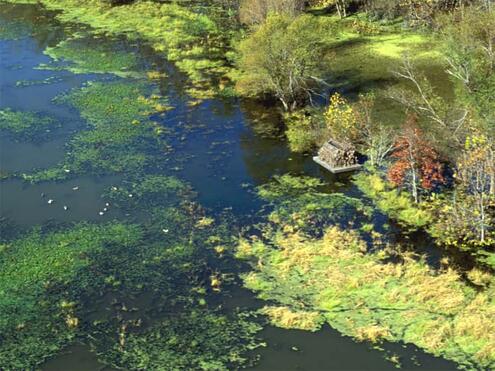
The water leaving a wetland is cleaner than the water entering.
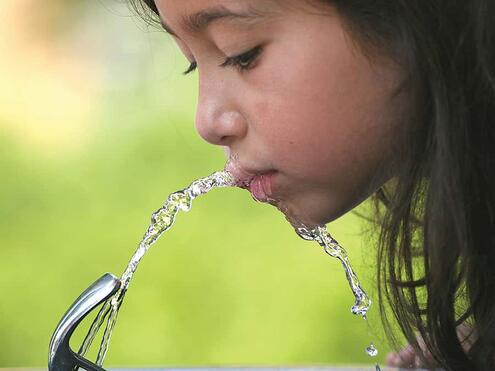
Most tap water is just as safe and clean as bottled water!
Image Credits:
girls playing with water: Abigail Keenan on Unsplash; tree: Digital Vision / AGE Fotostock; polar bear: NOAA; kangaroo rat: AMNH / R. Mickens; morning mist, snowflakes: J. Falk; volcano: McGimsey / USGS; snowy streets: Image 100 / AGE Fotostock; water molecule: AMNH; sea ice: NSF; clouds: V. Ryzin; Grand Canyon: NPS / M.Quinn; Central Park; rocks: AMNH / T. Gaud; iceberg: AMNH / C. Chesek; carrying water: Digital Vision / AGE Fotostock; hamburger: Amirali Mirhashemian on Unsplash; dam: BPA; wetland: USDA; girl drinking from water fountain: R. Friedman.




 Biodiversity
Biodiversity
 Brain
Brain
 Genetics
Genetics
 Marine BiOLogy
Marine BiOLogy
 MicrobiOLogy
MicrobiOLogy
 PaleontOLogy
PaleontOLogy
 ZoOLogy
ZoOLogy
 AnthropOLogy
AnthropOLogy
 ArchaeOLogy
ArchaeOLogy
 Astronomy
Astronomy
 Climate Change
Climate Change
 Earth
Earth
 Physics
Physics
 Water
Water
